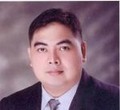Overview of Plastic Surgery
This article is prepared in order to enlighten the public of the true nature of Plastic Surgery specialty, particularly those interested in cosmetic surgery.
Plastic Surgery is both an art and science. For the aesthetic or cosmetic plastic surgeon, perhaps the predominant factor is the art. This is the aspect of surgery in which concentration and interest are focused on the restoration and improvement of forms as well as function. The disorders that the plastic surgeon encounters may be the result of aging, cosmetic inferiority, congenital defect, trauma and prior surgical procedure that have a profound effect on human emotion or psychological structure. Aesthetic plastic surgery, though admittedly done on occasion to rehabilitate a particular part of the body, is mainly performed to rehabilitate the entire person. It stands that improvement in a person's appearance, also improves a person’s self-image, and this in turn, provides a feeling of emotional and physical well- being.
Any cosmetic plastic procedure could be a worthwhile and extraordinary experience for both the patient and surgeon, if this is done in the light of surgical standards in term of safety. A Plastic Surgeon is both a Cosmetic and Reconstructive Surgeon. And reconstructive Surgery is a prerequisite for all Plastic Surgery Training Program. Since the very root of almost all cosmetic/aesthetic procedure can be traced from early reconstructive procedures. Thus a plastic surgeon whose main interest is aesthetic plastic surgery, must also have a firm foundation on reconstructive surgery, to better grasp on the basic principles and applications of aesthetic surgery. You ask from your doctor regarding his/her background or training in reconstructive surgery.
A minimum of 6 to 8 years of formal training in burns, aesthetic and reconstructive surgery at an accredited institution after medical school is required before a physician could call himself a Plastic Surgeon. This would include 3 to 5 years of General Surgery Program and 3 years of Burns, Cosmetic/Aesthetic and Reconstructive Plastic Surgery Training. In the Philippines, there are only few training institutions with plastic surgery program that are accredited and recognized by the local association of surgeons (Philippine College of Surgeons, Philippine Boards of Plastic and Philippine Association of Plastic Reconstructive and Aesthetic Surgeons). Nowadays, there are still many doctors (even non doctors) who are board-certified in other specialties but definitely not in plastic surgery, who perform cosmetic surgery procedures. With the complexity of the plastic surgery specialty, it is not enough for a surgeon to just undergo months or even a year of observership or training in an unaccredited establishment, to comprehend all the principles and applications in the field of plastic cosmetic surgery.
In order for you to attain the best results for the procedure you are interested without compromising your safety and health, we advice you to bring up all your concerns to a Certified Plastic Surgeon with proper qualifications and training in the field of Cosmetic/Aesthetic Surgery.
For more information on Philippine Cosmetic Plastic Surgery you may visit :
• What Is Cosmetic Plastic Surgery Specialty
Disclaimer: “Webmasters are free to reprint this article provided that it is not edited, the author's information is included, and the links are included as live links.”
Author:
Dr R Lorenzo
Plastic Cosmetic and Reconstructive Surgeon
Dr. Rino Lorenzo have a high sense of responsibility, devotion to duty, compassion to patients and above all a fervent desire to learn and excel in his chosen field. Dr. Lorenzo is Board Certified in plastic surgery, he is a Diplomate of the Philippine Board of Plastic Surgery and fellow of the Philippine Association of Plastic Reconstructive and Aesthetic Surgeons (PAPRAS).
Resource box text: “Dr Rino Lorenzo is the author of www.philippinecosmetic.com , a free guide to affordable cosmetic plastic procedures, choosing the right surgeon and safety tips in cosmetic plastic surgery”

Post new comment
Please Register or Login to post new comment.